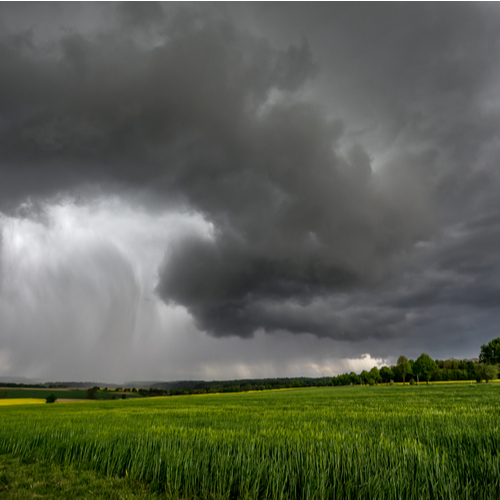
Be Prepared for the Wind and Natural Disasters
The wind is howling, now what? Growing up in South Florida, I have gone through at least one hurricane every single year. After years of hunkering down in the laundry room- considering that was the room in my house without windows- I thought I was prepared for any kind of wind or storm coming my way… Well not so much, because hurricanes are one thing but when a student moves to Maryland, they have to be prepared to take on the possible hurricane, earthquake, flood, or tornado.
For those who have students who are from out of state, the first mention of a potential weather emergency and the unknown sends parents into a justifiable panic. When the news about a potential emergency starts dominating the airwaves, especially in the area to which the storm is headed, parent’s concerns go into overdrive.
It is not that likely that there will be a natural disaster while you are in College Park, but it is possible, and is important to be safe and ready for everything. The chance of earthquake damage in College Park is about the same as Maryland’s average and is much lower than the national average. The risk of tornado or wind damage in College Park is higher than Maryland’s average and is higher than the national average.
How to Prepare
The University of Maryland’s Office of Emergency Management takes serious measures to ensure students are safe and prepared for any possible emergency. There are several ways students can take steps to prepare on their own as well. Students should sign up to get UMD text alerts so they will be informed on any active, major campus emergency. The UMD Alerts System is a mass, urgent notification system, comprised of a variety of methods by which the University can notify students, faculty, and staff of anything they need to know. In addition to texts, students can get email notifications as well if that is a better form to reach them at.
Another recommendation for students is to keep emergency supplies for your dorm, apartment, and vehicle. At their home, students should have an emergency supply kit. This is very important and helpful in the case of an emergency.
This kit should include:
- One gallon of water per person per day for at least three days
- Enough nonperishable food for at least three days and a can opener; keep protein-packed foods you can cook without electricity, such as tuna, peanut butter, and granola bars, and don’t forget about food for your pets
- Hand-crank or battery-powered radio with extra batteries to stay up to date on the latest weather alerts
- Flashlight with extra batteries
- First aid kit with gauze, tape, bandages, antibiotic ointment, aspirin, a blanket, non-latex gloves, scissors, hydrocortisone, thermometer, tweezers, and instant cold compress
- Tool kit with basic tools, in case you need to shut off utilities
- Hand sanitizer and garbage bags for sanitation
- Plastic sheeting and duct tape in case of broken windows or a leaky roof
- Whistle to signal for help so rescuers can locate you
The kit should be located in a place that is easily accessible area and should be checked every six months and expired items should be replaced to keep the kit up to date. Vehicle’s emergency supply kits should include:
- A properly inflated spare tire, wheel wrench, and tripod jack
- Jumper cables
- Tool kit and/or a multipurpose utility tool
- Flashlight and extra batteries
- Reflective triangles and brightly colored cloth to make your vehicle more visible
- Compass
- First aid kit with gauze, tape, bandages, antibiotic ointment, aspirin, a blanket, non-latex gloves, scissors, hydrocortisone, thermometer, tweezers, and instant cold compress
- Nonperishable, high-energy foods, such as unsalted nuts, dried fruits, and hard candy
- Drinking water
- Reflective vest in case you need to walk to get help
- Car charger for your cell phone
- Fire extinguisher
- Duct tape
- Rain poncho
- Additional items for cold weather include a snow brush, shovel, windshield washer fluid, warm clothing, cat litter or sand for traction and blankets
Pass on these great tips, tell your friends and like us on Facebook, Instagram, Twitter, and Pinterest. Find out more about how to use HaveUHeard as a great resource. Sign up for other great tips at haveuheard.com.

Leave A Comment